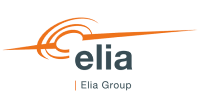Elia showcases its innovative side with these four projects
The energy sector is in a state of flux: renewable and decentralised energy generation is growing, digitalisation is fostering new technologies and international cooperation is becoming more common. Belgian system operator Elia is working hard to make this energy transition a reality in our country too.
1. International power exchange
The rise of renewable energy has triggered a growing need to exchange electricity on an international scale. If Belgium temporarily experiences a lack of sun or wind, it can import this energy from elsewhere in Europe and vice versa. To this end, Elia is building a number of interconnectors. Nemo Link, for example, was officially commissioned in 2019. This is the first subsea interconnector between Belgium and the UK and can import up to 1,000 MW, a capacity equal to that of a nuclear power plant. But that's not all. Elia is currently building ALEGrO, a high-voltage connection between Belgium and Germany.
2. First plug at sea
Elia is also making every effort to facilitate the further integration of renewable energy. The Modular Offshore Grid (MOG), for instance, is the first Elia project involving a switchyard platform (or a plug, if you will) at sea. It attracted the interest of King Philippe, who paid the platform a visit. By late 2020, the MOG will bundle the electricity generated by four wind farms off the coast of Zeebrugge and transmit it to the mainland via one centralised subsea cable.
3. Blockchain
Elia is fully exploring the potential applications of blockchain technology in the energy sector. The increase in renewable energy generation is making it more and more difficult for the system operator to maintain a balance between generation and consumption at all times. Elia is assessing the potential of blockchain technology as a payment system to settle such complex transactions.
4. Virtual reality
Elia wants to harness innovative technologies to digitalise and improve the various tasks performed by technicians with a view to making their work in the field faster, more efficient and safer. For example, Elia employees can use VR glasses to visit a high-voltage substation digitally in order to assess the preparatory work.
Metro, 2019
